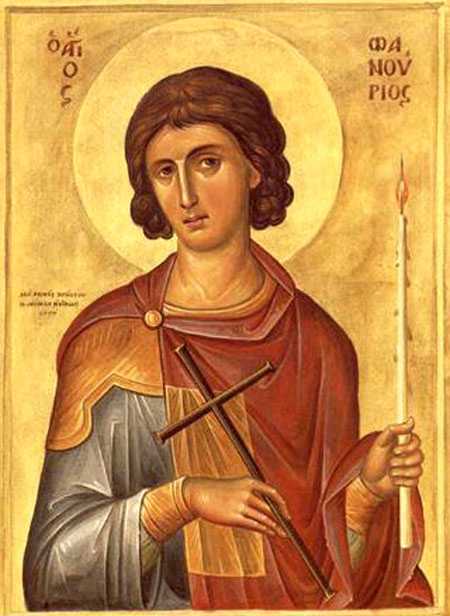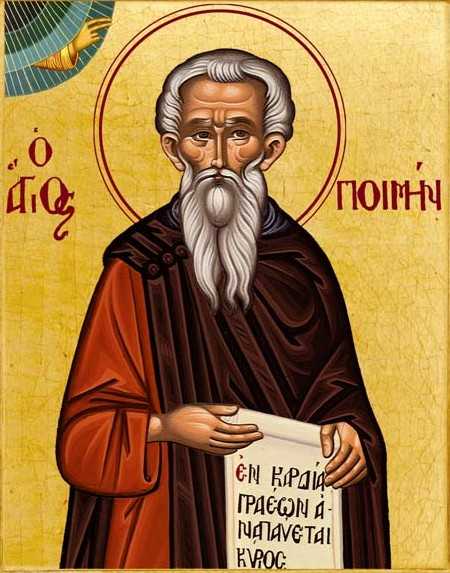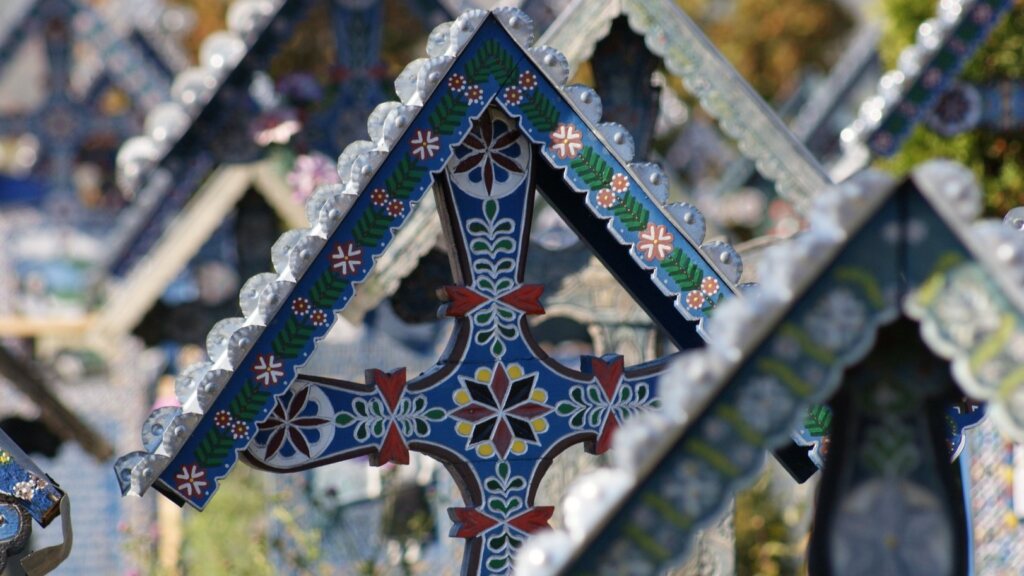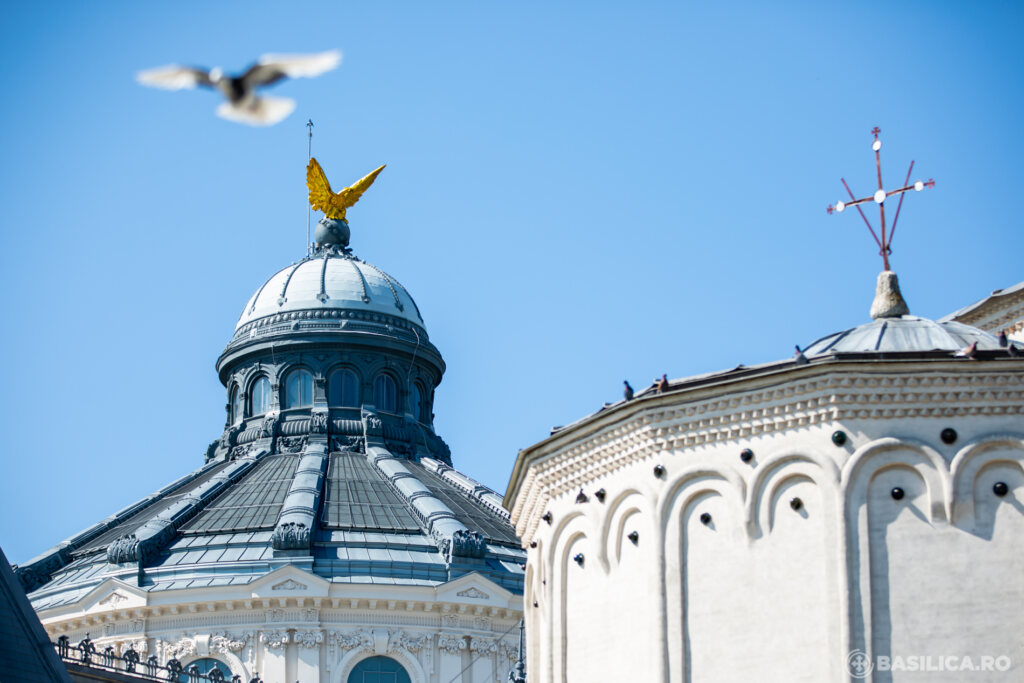Saint Pimen the Great
1. Saint Pimen the Great was born about the year 340 in Egypt. He went to one of the Egyptian monasteries with his two brothers, Anoub and Paisius, and all three received monastic tonsure. The brothers were such strict ascetics that when their mother came to the monastery to see her children, they did not come out to her from their cells.
The mother stood there for a long time and wept. Then Saint Pimen said to her through the closed door of the cell, “Do you wish to see us now, or in the future life?” Saint Pimen promised that if she would endure the sorrow of not seeing her children in this life, then surely she would see them in the next. The mother was humbled and returned home.
Fame of Saint Pimen’s deeds and virtues spread throughout the land. Once, the governor of the district wanted to see him. Saint Pimen, shunning fame, thought to himself, “If dignitaries start coming to me and show me respect, then many other people will also start coming to me and disturb my quiet, and I shall be deprived of the grace of humility, which I have acquired only with the help of God.” So he refused to see the governor, asking him not to come.
For many of the monks, Saint Pimen was a spiritual guide and instructor. They wrote down his answers to serve for the edification of others besides themselves. A certain monk asked, “If I see my brother sinning, should I conceal his fault?” The Elder answered, “If we reproach the sins of brothers, then God will reproach our sins. If you see a brother sinning, do not believe your eyes. Know that your own sin is like a beam of wood, but the sin of your brother is like a splinter (Mt. 7:3-5), and then you will not enter into distress or temptation.”
Another monk said to the saint, “I have sinned grievously and I want to spend three years at repentance. Is that enough time?” The Elder replied, “That is a long time.” The monk continued to ask how long the saint wished him to repent. Perhaps only a year? Saint Pimen said, “That is a long time.” The other brethren asked, “Should he repent for forty days?” The Elder answered, “I think that if a man repents from the depths of his heart and has a firm intention not to return to the sin, then God will accept three days of repentance.”
When asked how to get rid of persistent evil thoughts, the saint replied, “This is like a man who has fire on his left side, and a vessel full of water on his right side. If he starts burning from the fire, he takes water from the vessel and extinguishes the fire. The fire represents the evil thoughts placed in the heart of man by the Enemy of our salvation, which can enkindle sinful desires within man like a spark in a hut. The water is the force of prayer which impels a man toward God.”
Saint Pimen was strict in his fasting and sometimes would not partake of food for a week or more. He advised others to eat every day, but without eating their fill. Abba Pimen heard of a certain monk who went for a week without eating, but had lost his temper. The saint lamented that the monk was able to fast for an entire week, but was unable to abstain from anger for even a single day.
To the question of whether it is better to speak or be silent, the Elder said, “Whoever speaks on account of God, does well, and whoever is silent on account of God, that one also does well.”
He also said, “If man seems to be silent, but his heart condemns others, then he is always speaking. There may be a man who talks all day long, but he is actually silent, because he says nothing unprofitable.”
The saint said, “It is useful to observe three things: to fear God, to pray often, and to do good for one’s neighbor.”
“Wickedness never eradicates wickedness. If someone does evil to you, do good to them, and your goodness will conquer their wickedness.”
Once, after Saint Pimen and his disciples arrived at the monastery of Scetis, he learned that the Elder living there was annoyed at his arrival and was also jealous of him, because monks were leaving the Elder to see Abba Pimen.
In order to console the hermit, the saint went to him with his brethren, taking food with them as a present. The Elder refused to receive them, however. Then Saint Pimen said, “We shall not depart from here until we are permitted to see the holy Elder.” He remained standing at the door of the cell in the heat. Seeing Saint Pimen’s humility and patience, the Elder received him graciously and said, “Not only is what I have heard about you true, but I see that your works are a hundred times greater.”
He possessed such great humility that he often sighed and said, “I shall be cast down to that place where Satan was cast down!”
Once, a monk from another country came to the saint to receive his guidance. He began to speak about sublime matters difficult to grasp. The saint turned away from him and was silent. They explained to the bewildered monk that the saint did not like to speak of lofty matters.
Then the monk began to ask him about the struggle with passions of soul. The saint turned to him with a joyful face, “Now you have spoken well, and I will answer.” For a long while he provided instruction on how one ought to struggle with the passions and conquer them.
Saint Pimen died at age 110, about the year 450. Soon after his death, he was acknowledged as a saint pleasing to God. He was called “the Great” as a sign of his great humility, uprightness, ascetic struggles, and self-denying service to God.
Troparion, tone 8:
By a flood of tears you made the desert fertile, and your longing for God brought forth fruits in abundance. By the radiance of miracles you illumined the whole universe! Our Father Pimen, pray to Christ God to save our souls!
Saint Phanurius
2. We know nothing for certain about the background of Saint Phanurius, nor exactly when he lived. Tradition says that when the island of Rhodes had been conquered by Moslems, the new ruler of the island wished to rebuild the walls of the city, which had been damaged in previous wars. Several ruined buildings were near the fortress, and stone from these buildings was used to repair the walls at the end of the fifteenth century, or the beginning of the sixteenth.
While working on the fortress, the Moslems uncovered the ruins of a beautiful church. Several icons, most of them badly damaged, were found on the floor. One icon, of Saint Phanurius, looked as if it had been painted that very day. The local bishop, whose name was Nilus, was called to see the icon. It said, “Saint Phanurius.”
The saint is depicted as a young soldier holding a cross in his right hand. On the upper part of the cross is a lighted taper. Twelve scenes from his life are shown around the border of the icon.
These scenes show him being questioned by an official, being beaten with stones by soldiers, stretched out on the ground while soldiers whip him, then having his sides raked with iron hooks.
He is also shown locked up in prison, standing before the official again, being burned with candles, tied to a rack, thrown to the wild animals, and being crushed by a large rock. The remaining scenes depict him standing before idols holding burning coals in his hands, while a demon stands by lamenting his defeat by the saint, and finally, the saint stands in the midst of a fire with his arms raised in prayer.
These scenes clearly revealed that the saint was a martyr. Bishop Nilus sent representatives to the Moslem ruler, asking that he be permitted to restore the church. Permission was denied, so the bishop went to Constantinople and there he obtained a decree allowing him to rebuild the church.
At that time, there was no Orthodox bishop on the island of Crete. Since Crete was under the control of Venice, there was a Latin bishop. The Venetians refused to allow a successor to be consecrated when an Orthodox bishop died, or for new priests to be ordained, hoping that in time they would be able to convert the Orthodox population to Catholicism. Those seeking ordination were obliged to go to the island of Kythera.
It so happened that three young deacons had traveled from Crete to Kythera to be ordained to the holy priesthood. On their way back, they were captured at sea by Moslems who brought them to Rhodes to be sold as slaves. Lamenting their fate, the three new priests wept day and night.
While in Rhodes the priests heard of the miracles performed by the holy Great Martyr Phanourius. They began to pray to him with tears, asking to be freed from their captivity. Each of the three had been sold to a different master, and so remained unaware of what the others were doing.
By the mercy of God, each of the priests was allowed by his master to pray at the restored church of Saint Phanurius. All three arrived at the same time and prostrated themselves before the icon of the saint, asking to be delivered from the hands of the Hagarenes (Moslems, descendants of Hagar). Somewhat consoled, the priests left the church and returned to their masters.
That night Saint Phanurius appeared to the three masters and ordered them to set the priests free so that they could serve the Church, or he would punish them. The Moslems ignored the saint’s warning, believing the vision to be the result of sorcery. The cruel masters bound the priests with chains and treated them even worse than before.
Then Saint Phanourius went to the priests and freed them from their shackles, promising that they would be freed the next day. Appearing once more to the Moslems, the holy martyr told them severely, “If you do not release your slaves by tomorrow, you shall witness the power of God!”
The next morning, all the inhabitants of the homes where the priests were held awoke to find themselves blind, paralyzed, and in great pain. They considered what they were to do, and so decided to send for the priests. When the three priests arrived, they asked them whether they could heal them. The priests replied, “We will pray to God. May His will be done!”
Once more Saint Phanurius appeared to the Hagarenes, ordering them to send to the church a document granting the priests their freedom. He told them that if they refused to do this, they would never recover their sight or health. All three masters wrote letters releasing the priests, and sent the documents to the church, where they were placed before the icon of Saint Phanurius.
Before the messengers returned from the church, all those who had been blind and paralyzed were healed. The priests joyfully returned to Crete, carrying with them a copy of the icon of Saint Phanurius. Every year they celebrated the Feast of Saint Phanurius with deep gratitude for their miraculous deliverance.
The saint’s name sounds similar to the Greek verb “phanerono,” which means “to reveal” or “to disclose.” For this reason, people pray to Saint Phanurius to help them find lost objects. When the object is recovered, they bake a sweet bread and share it with the poor, offering prayers for the salvation of saint’s mother. Her name is not known, but according to tradition, she was a sinful woman during her life. Saint Phanurius has promised to help those who pray for his mother in this way.
Troparion — Tone 4
A heavenly song of praise is chanted radiantly upon the earth / the company of angels now joyfully celebrates an earthly festival, / and from on high with hymns they praise your contests, / and from below, the church proclaims the heavenly glory / which you have found by your labors and struggles, / O glorious Phanourius.

St. Hosius the Confessor, bishop of Cordova
3. Saint Hosius the Confessor was bishop for more than sixty years in the city of Cordova (Spain) during the fourth century. The holy emperor Saint Constantine the Great (306-337) deeply revered him and made him a privy counsellor. The saint advised Saint Constantine to convene the First Ecumenical Council at Nicea in 325, and he was the first to sign the acts of this Council.
After the death of Saint Constantine the Great, Saint Hosius defended Saint Athanasius of Alexandria (May 2) against the emperor Constantius (337-361), an advocate of the Arian heresy. Because of this, they sent him to prison in Sirmium.
Saint Hosius died in the year 359 after his return to Cordova.
Tr by oca.org







